
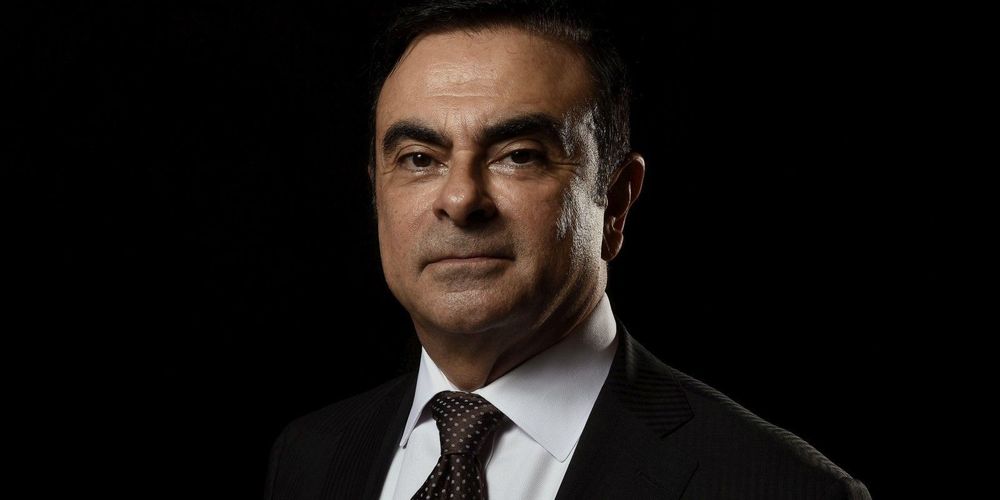
Carlos Ghosn and Michelin: a dizzying ascent
Even for a former student of the Ecole Polytechnique and the Ecole des Mines de Paris, an engineering career at Michelin, begins with a stay in the workshop, at the side of the workers, as close as possible to the product. For Carlos Ghosn, who joined the Clermont-Ferrand factory in 1978, having just graduated, it was at the Le Puy plant in Blovozy. From 1981, after several missions which took him to Tours, Cholet and Karlsruhe, he returned to Le Puy as factory manager. He is 27 years old.
After manufacturing, it was research. Inventor of the radial tyre, innovation is a priority for the Group. In 1984, Carlos Ghosn was entrusted with the management of the research and development department for tyres for industrial use, those used on heavy goods vehicles and large construction machines.
Carlos Ghosn, a leader with a multicultural profile
It was in 1985 that this exceptionally fast ascent took its first decisive turn. Under the leadership of François Michelin, “Bibendum” – commonly referred to the Michelin Tyre Man, the official mascot of the company – embarked on a worldwide expansion that would transform the Clermont-Ferrand factory into a genuine multinational. Not without difficulty. Michelin made heavy investments in Brazil, a promising but difficult market ravaged by galloping inflation. Carlos Ghosn will have waited seven years to return to the country where he was born, whose language he speaks and where part of his family lives. But he returned as the head of Brazilian operations, in charge of two factories and two plantations where Michelin produces part of the latex it uses in the ultra-secret composition of its rubber. He is barely 31 years old.
This recovery mission, which is considered high risk, will be carried out so quickly, and so well, that the Brazilian stay will be much shorter than expected and hoped for. In 1989, Carlos Ghosn, his wife Rita and their daughter Caroline, left Rio de Janeiro for Greenville, South Carolina. It was in this “Bible Belt” town that Michelin set up the headquarters of its North American operations. The stakes are high. Michelin has just taken control of the American number two in tyres, Uniroyal-Goodrich, and the success of the integration would propel the Clermont-Ferrand company to the top of the industry.
In managing the merger, Carlos Ghosn has implemented principles and solutions, some of which had already been tested in Brazil, and will become pillars of his management method. Listening, a lot. Going into the field. Analysing, in depth. Break silos, notably with the now famous “cross-functional” teams. Respecting individuals and traditions, but without hesitation removing all obstacles to performance, which is the condition for the survival and development of any company. Set ambitious objectives, integrated into a multi-year plan that allows everyone to know where the company is going and how it will get there.
Once again, success was achieved. The activities placed under the responsibility of Carlos Ghosn, in North America and then in the rest of the world, represented 40% of Michelin’s worldwide turnover. It is in Greenville, alongside Carlos Ghosn that François Michelin sends to train, his youngest son, Edouard designated as his successor at the head of the manufacture.
A remarkable debut at Renault
In 1996, having joined Michelin eighteen years earlier, the number two knows that he will never be number one, because of the tradition of family succession. It is a headhunter who will make him meet Louis Schweitzer, the boss of Renault, in search of a deputy CEO and future successor, if all goes well. The French car manufacturer is no longer the financial abyss of the 80s and the process of privatising the former Régie Nationale des Usines Renault has begun. But in a constantly evolving auto industry, the Billancourt company is too small, too French. The failure to merge with Volvo in 1993 left a bitter taste. Not profitable enough, losing money internationally, the group is part, with PSA and Fiat, of regular speculation on their independence in the future.
The “20 billion franc plan”, outlined and implemented by Carlos Ghosn, will enable Renault to reach satisfactory operating margin and to have the financial means for its growth, whereas the “merger between equals” announced between Germany’s Daimler and America’s Chrysler now sets the survival threshold for a car manufacturer at four million vehicles per year. Although it was above all a programme of investment and conquest, Carlos Ghosn was nicknamed the “cost killer” because of the much publicised closure of the Belgian factory in Vilvoorde.
In 1998, Nissan, the Japanese number two in the automobile sector, demonstrated the fate that awaits a company which has lost control of its production costs: bankruptcy. The group was buried under 20 billion dollars of debt; 39 of the 42 models sold lost money; certain factories were running at less than 50% capacity.
On 27 March 1999, Louis Schweitzer urges Carlos Ghosn to save Nissan
For Renault, whose search for an indispensable partner has continued, this is an opportunity not to be missed. But Louis Schweitzer sets one condition: that Carlos Ghosn, barely rooted in France, leaves for Japan to pilot Nissan’s recovery. On March 29, 1999, in Tokyo, the Renault-Nissan Alliance was announced. For 5 billion euros, Renault acquires 36.8 % of Nissan’s capital, obtains three positions on the executive committee, including Carlos Ghosn as director of operations.
Under his leadership, the small “commando” of thirty executives from Renault set to work. On October 1999, Carlos Ghosn presents the Nissan Revival Plan (NRP) which shakes up certain taboos of the Japanese business world: closure of five factories, elimination of 21,000 jobs (without layoffs), dismantling of the “keiretsu”, this set of non-strategic subsidiaries and cross-shareholdings which has become a burden for Nissan. Suppliers and equipment manufacturers, an essential ”ecosystem” for a large automobile manufacturer, will be reorganized in depth. And the future prepared with a new product plan and a design revolution.
The ambitious objectives of the NRP will all be achieved ahead of schedule, including debt reduction and the restoration of the operating margin. Carlos Ghosn had made this a condition for maintaining the executive committee, which he officially took over in 2001 when he became Nissan’s CEO. He is 47 years old, an event in a country that practices promotion based on seniority.
The “Ghosn Shock” will have a significant impact on the Japanese business world, studied in numerous books, and dozens of case studies from business schools around the world.
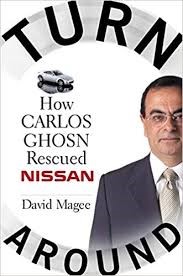
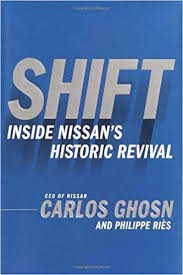

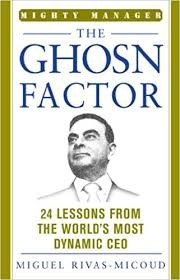
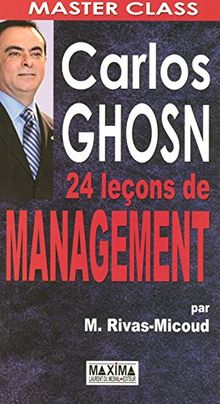
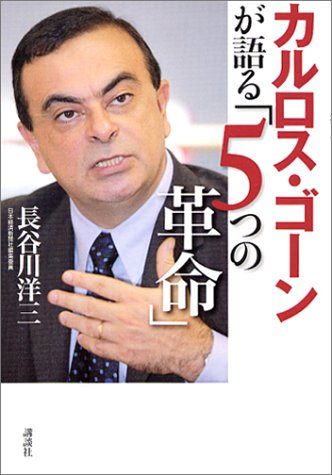
Far from being a simple turnaround exercise, Nissan’s rebirth has been achieved by preserving the company’s identity, by enhancing the strongest elements of its culture, and by making its French ally benefit in return from its know-how. The development of synergies within the Renault-Nissan Alliance, which is subject to rigorous planning and quantification, will make a substantial contribution to the turnaround.
The NRP, followed in 2004 by a new three-year plan, Nissan 180 (1 million cars produced, an operating margin of 8%, a debt reduced to 0) also achieved in advance, is the launching ramp for international expansion, made possible not only by the recovery of the financial situation but by the international repercussions of this unusual industrial adventure.
New partners and visionary projects for the Renault-Nissan Alliance
In 2002, the Chinese authorities agree for Nissan to invest in a joint venture with the state-owned group Dongfeng, the Chinese truck leader. From marginal, Nissan’s presence in China, on the way to becoming in two decades the largest automobile market on the planet, will become the strongest among all the Japanese automakers. Investments on the same scale, in the order of a billion dollars, will be made in the United States, with the opening of a second plant in Canton (Mississippi) and Brazil (Resende plant in the State of Rio de Janeiro).
In 2005, while the imbalance within the Alliance between a Nissan in full expansion and a Renault group that was stagnating, Carlos Ghosn accepted Louis Schweitzer’s proposal to return to Billancourt as CEO. He will take up the unprecedented challenge of managing two Fortune 500 companies employing hundreds of thousands of people on dozens of industrial sites around the world. It is also the means to pursue relentlessly the convergence work within the Alliance. The price to pay was an infernal rhythm of professional life, one week in Tokyo, the next in France, and regular stays in China, the United States, Brazil, Turkey, Russia and all the countries where the Alliance has a significant presence.
Carlos Ghosn’s return to Renault will translate into new ambitions, despite the shock that this industry, like others, will suffer due to the global financial crisis that swept through from autumn 2008.
Dacia, the brand which has enabled Renault to create a new market segment, “low cost”, will be equipped with a complete range and, in 2012, a new factory in Morocco, which will greatly increase its production capacity to meet the rapidly growing demand. The Renault Group, which had a modest presence in Russia, has been entrusted by Vladimir Putin with the high-risk mission of bringing AvtoVAZ, the manufacturer which, with the Lada brand, holds 40% of the Russian market, up to international standards. The economic and social challenge is considerable, but the immense Togliatti factory will become, after years of effort, a high-performance production platform for AvtoVAZ and the Alliance’s main brands, Renault, Nissan and Dacia.
In 2009, Carlos Ghosn is faced with a difficult choice. With the bankruptcy of General Motors on his hands, the Obama administration officially asked him to lead its recovery. Returning to the United States, where three of his children were born, is obviously tempting. But it implies abandoning the helm of the Alliance in the midst of a financial storm since the Americans don’t envisage GM becoming its American pillar. A negotiation which Carlos Ghosn had nevertheless taken quite far in 2006. This is impossible.
During global crises: responsiveness and focus on the long term
It was in 2009 that the boss of the Renault-Nissan Alliance, almost a decade ahead of schedule, made him take a historic turn: the future of the automobile industry will be electric. He launches a multi-year investment program worth billions of dollars. Nissan with Leaf and Renault with Zoe become the first generalist carmaker in the world to put “zero-emission” vehicles on the road.
After the financial crisis, the tribulations continue. In 2011, Japan is hit by an earthquake and tsunami that reach the Tohoku region north of Tokyo. When many expatriates, faced with the threat created by the nuclear disaster in Fukushima, leave the archipelago, Carlos Ghosn returns by the first available plane. He went in person to the engine factory in Iwaki, next door to Fukushima, to publicly announce that it would be rebuilt.
In 2016, the proud Japanese conglomerate Mitsubishi called on Carlos Ghosn to save Mitsubishi Motor Corporation (MMC), its automobile branch once again in difficulty. Nissan takes 34% of the capital and Carlos Ghosn becomes chairman of the board of directors. Once again, thanks to the know-how transferred from the Alliance and the rapid release of synergies, the recovery will be spectacular. MMC brings certain useful technologies, such as the rechargeable hybrid engine, and a strong presence in Southeast Asia.
The Alliance becomes, in 2017 and 2018, the world number one car maker in volume, surpassing, with more than ten million vehicles sold, the German giants Volkswagen and Japanese Toyota. The Alliance is then experiencing its best years. And Renault recorded the best financial results in its more than century-old history.
In Amsterdam, the lead structure of the Alliance was prepared for a new phase of convergence between the different partners. Carlos Ghosn, who handed over operational control of Nissan in 2016, is preparing to do the same at Renault, taking advantage of the last mandate as CEO to prepare the Alliance for the technological revolution in which the “industry of industries” is engaged. He is convinced that this model, unique in a sector where most of the rapprochements have been failures, has still potential for expansion. Advanced contacts have been made with John Elkann, heir of the Agnelli dynasty, controlling shareholder of Fiat-Chrysler Automobile (FCA). The entry of FCA would strengthen the presence in North America of an Alliance that has become truly “Global Motors”. Then came on the 19th of November 2018…

